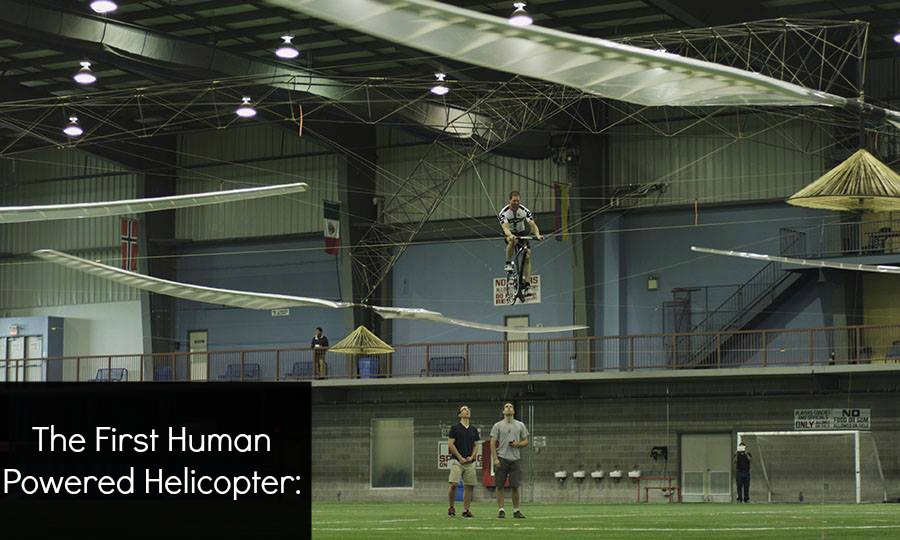

(Photo courtesy of Martin Turner – Visiblize.com)
On July 11, 2013 the University of Toronto based AeroVelo Inc. did what many thought impossible. They revealed their human powered helicopter actually worked and, in so doing, they claimed the coveted $250,000 Igor I. Sikorsky Human Powered helicopter prize. The award, originally posted in 1980, stated the helicopter had to obtain a height of 3 meters, stay in flight for 60 seconds, and drift no more than 10 meters. The Atlas human powered helicopter reached a height of 3.3 meters (11 feet), drifted 9.8 meters (32 feet) and stayed in the air for just over 64 seconds.

The Atlas team had been working on the vehicle since May 2012. It first flew eight months ago, and the team used a trial and error method to make improvements. The most difficult part of the trial was the height requirement of 3 meters. For very low flights, a helicopter pushes air toward the ground and traps it to produce lift. It takes nearly twice as much power to reach a height of 3 meters as it does to float just above the ground.
Below is an image of the winning design, which was created by Todd Reichert. This drawing reveals the basics of the human-powered helicopter. The pilot would sit in the middle of the craft and is surrounded by the four rotors.

The team overcame this problem by making the vehicle very large. With a width of over 49 meters (154 feet), the Atlas is surprisingly light, only 55 Kg (121 lbs). Todd Reichert, AeroVelo co-founder, and the leader of the Atlas team piloted the vehicle for its historic flight. Reichert had to pedal with 1.2 horsepower to maintain the flight, which is about twice what an average person produces when cycling. So we probably won’t be flying about in similar contraptions anytime soon. Still, it is a remarkable feel of human ingenuity.